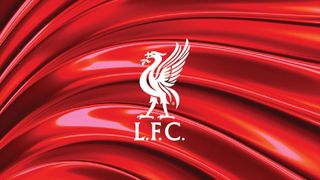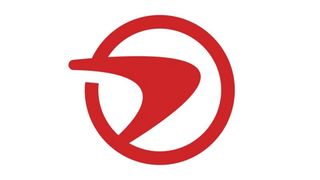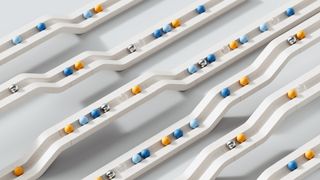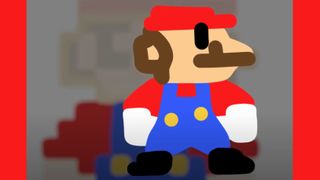Solving problems efficiently through design
Designer and frontend developer Tim Smith explains what design is, what it isn't and how we can add value to the products we work on by knowing the difference
We live in an amazing time. I'm talking about a really breathtaking and exciting time. Working on the web has never been so exhilarating with the introduction of new devices such as iPad, iPhone and Android phones that are completely revolutionising the way we design for the web. These devices are forcing us to take into consideration new interaction models, screen sizes and the way our users are now browsing the web.
CSS3 and HTML5 have given us new ways to beautify the web. I come across sites that are down right gorgeous every day. All this beauty is great and it shows how, as an industry, we've really outgrown the days of ugly websites and are moving toward a usable web.
However, are we staying true to the core of our profession? Are we solving interaction and user problems? Are we ,as Mike Monteiro said on this very site, "choosing better problems to solve"? Or are we fooling ourselves into believing that design is mere knowledge of gradients and drop shadows?
What is design?
The dictionary defines design as the act of planning the form and structure of a particular object. When you hear a definition like that, it's honestly quite easy to be left with the same understanding you had before. With that said, let's dissect it.
The part I really love of that definition is the word "planning". Planning is an essential part of design. Ideation, sketching and wireframing is the "planning of the form and structure" of a website or application. If you're working as a designer for a product or an agency and you're not involved in the wireframes, you're not doing your job.
The truth is, as designers, our job is to be problem solvers. Problem solving takes place at a visual design level, don't get me wrong. However, the main bulk happens before. Wireframes and sketching are made to tackle and solve tough experience and interaction problems. Every project has problems, no matter what type and if we're not providing efficient solutions, what are we doing?
It's not design and that's for sure. It's fluff. It's hours of time and work that don't add any value to your clients or employer's business. Time is money. Don't waste it.
Get the Creative Bloq Newsletter
Daily design news, reviews, how-tos and more, as picked by the editors.
When in the realm of product design, our job is crucial. If you're working with an awesome startup, you're taking a lot of design decisions and be prepared for the consequences of these. The success of a product depends on whether you did your job right or not. As designers, we have the opportunity to create experiences on the web that can delight and bring joy to people; let's not waste the opportunity.
How to make it happen
Create value by working closely and collaborating with the design team to take logical design decisions. Converse, debate and Skype back and forth like it's going out of style. These conversations contribute to creating an amazing experience for your users and long term success of the product. If you're a lead or creative director, it's your job to keep the lines of communication open and encourage these type of conversations. It's for the betterment of the product and your team. Learn and grow together. Don't ever be afraid to ask questions and voice your opinion. The counsel of many, leads to success. Be passionate.
Also, put real effort into understanding your users. Why should they use your product? Have you made it easy to use? Does it solve the particular problem they had before? Does it communicate the values and goals of your company? Does it show that you care? Aarron Walter's book Designing for Emotion, really helped me see that one of the best things you could do is give your site a personality and make an emotional connection with your users.
A lot of this process takes place when writing copy. I'm guilty of ignoring the copy at one point in my career and as I look back, that was extremely foolish of me. As designers we are responsible for the complete experience of a product; the content is a vital part of that experience. If you don't know the content of a website, how could you possibly design it right?
Lets illustrate this. What if you saw someone really well dressed. I mean amazingly well dressed. Hugo Boss suit, Armani watch and some real nice Bostonian’s. You go to talk to this guy and he's a complete jerk. Chances are you'll never talk to this guy again.
Now before we go on a tangent about whether Hugo Boss really cuts the best suits, let's see how this brings us back to our copy situation. The relation between these two stories is this: your app can have the “best dressed” interface out there but, if the copy, in other words what your app is saying, doesn't compliment that interface, your users won't return. The content dictates the design of a site. Don't ignore it.
Please be humble. The truth is, we don't know it all and we never will. Your team or teams are full of awesome people and you have to be modest and recognise where your area of expertise ends. Learn from others yet explain your stand on issues with respect. After all, you all have the same goal: make the product better.
Be eager to learn. It really is amazing how much knowledge is out there waiting to be consumed. Never lose your curiosity to learn new things. Not only does this add value to your company and product, it makes you a better you! This is why it's important to be modest. Knowing where you're limits are helps you see what new technique or technology you could afford to pick up. I love the people I work with. I learn something new every day.
There is no denying that at the end of the day, this is a business and we're all out to make a living. However, true value is measured by the ability to accomplish business strategies and create products that users will fall in love with. That's real value. When we create a product that solves an important problem and makes a connection with real people. It's when this is accomplished that it truly is amazing to be apart of this industry. When you see that people really love what you create, boy is that nice.

Thank you for reading 5 articles this month* Join now for unlimited access
Enjoy your first month for just £1 / $1 / €1
*Read 5 free articles per month without a subscription

Join now for unlimited access
Try first month for just £1 / $1 / €1
The Creative Bloq team is made up of a group of design fans, and has changed and evolved since Creative Bloq began back in 2012. The current website team consists of eight full-time members of staff: Editor Georgia Coggan, Deputy Editor Rosie Hilder, Ecommerce Editor Beren Neale, Senior News Editor Daniel Piper, Editor, Digital Art and 3D Ian Dean, Tech Reviews Editor Erlingur Einarsson and Ecommerce Writer Beth Nicholls and Staff Writer Natalie Fear, as well as a roster of freelancers from around the world. The 3D World and ImagineFX magazine teams also pitch in, ensuring that content from 3D World and ImagineFX is represented on Creative Bloq.




